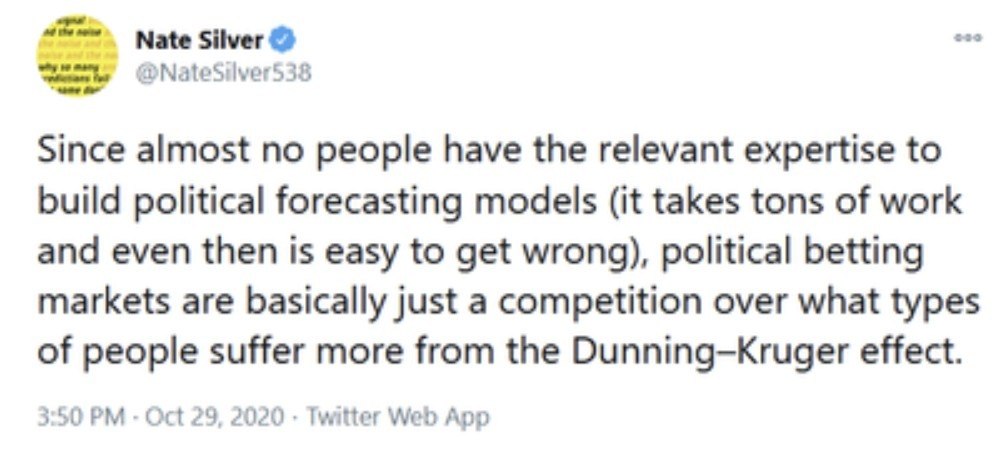David Myers at MacMillan Learning:
 But this year, the betting and prediction markets differ sharply. The betting markets see a 34 percent chance of a Trump victory, while the prediction models see but a 5 to 10 percent chance. So who should we believe?
But this year, the betting and prediction markets differ sharply. The betting markets see a 34 percent chance of a Trump victory, while the prediction models see but a 5 to 10 percent chance. So who should we believe?
Skeptics scoff that the poll-influenced prediction models erred in 2016. FiveThirtyEight’s final election forecast gave Donald Trump only a 28 percent chance of winning. So, was it wrong? Consider a simple prediction model that predicted a baseball player’s chance of a hit based on the player’s batting average. If a .280 hitter came to the plate and got a hit, would we discount our model? Of course not, because we understand the model’s prediction that sometimes (28% of the time, in this case), the less likely outcome will happen. (If it never does, the model errs.)
But why do the current betting markets diverge from the prediction models?
More here.
